Rust Stains in Toilet
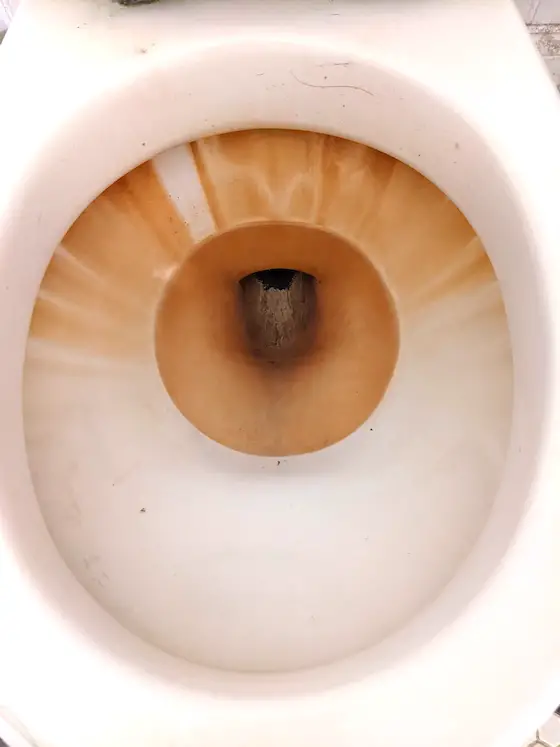
Wait until you see the after photo below.
Rust Stains in Toilet - Remove with Ease
Do you remember that day in high school chemistry class when you grumbled under your breath saying something like, “This is NUTS. When will I ever use this information in my lifetime?” Well, get out a fork and plate and start eating your giant piece of humble pie as you apologize to your wise chemistry teacher. That knowledge you rejected has cost you hundreds, and possibly, thousands of dollars.
I admit I was one who said that loud enough that I was rewarded an afternoon in detention for disrespect. It was only years later that I came to appreciate how simple chemistry surrounds you and me each day in so many things. Harnessing this knowledge allows you to solve many problems around your house yourself saving you huge sums of money.
For example, who would ever think that copper ions bond with asphalt molecules preventing them from cross linking? When this happens, roof shingles age much slower and last decades longer than they should. I was the first person in the world to discover this chemistry magic back when I was writing my Roofing Ripoff exposé book.
Did you ever think that high school chemistry would allow you to get rust out of clothing, off of concrete, remove it from vinyl siding, remove tough rust stains from vinyl swimming pool liners? How about removing harsh tannin stains from the bottom of boats? How about removing rust stains in a toilet? I didn’t think so.
A simple and fairly safe acid allows all this magic to happen. You just use affordable oxalic acid. Decades ago when I first started Ask the Builder I became aware of oxalic acid. I was doing research about the best way to clean redwood before the Internet was mainstream. I reached out to the California Redwood Association. They sent me a wonderful pamphlet that explained the step-by-step method to make dingy dark redwood look new again using an oxalic acid solution.
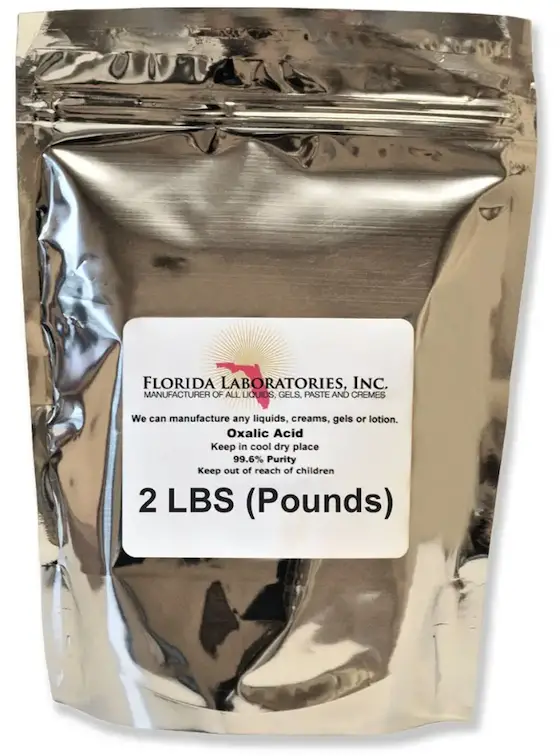
This is a re-sealable bag of oxalic acid crystals. Go HERE to get it delivered to your home NOW.
Not too many years after this I jumped down the oxalic-acid rabbit hole once more. A reader, not unlike you, had written to me about removing rust from concrete. Not knowing the best answer since I didn’t pay much attention in high school or college chemistry class, I asked a chemist friend of mine and he immediately said, “Oh, that’s easy. Use oxalic acid.” I shared the advice and heard back from the reader that it worked well.
But years went by before I would try it for myself. Just days ago I had my first hands-on experience with oxalic acid. It turns out I’m imperfect like you might be. My lovely wife reminds me of this on a regular basis. I forgot to change a large filter that captures dissolved iron in our well water. The filter should have been changed many months before.
Slowly the toilet that gets most used in our house started to get nasty rust stains in the bowl. This rust disease then spread to our white china apron kitchen sink. A week later a second toilet bowl began to develop a slight orange cast. I reached out to the company that installed the water softener and purification system.
The first question the representative asked was, “When did you last change the filter?” Ruh roh! I cringed when I saw the condition of the filter. Once I had the water system working properly again, it was time to tackle cleaning the china surfaces. Yes, I immediately set up an automatic calendar reminder so every three months I get a morning reminder to change the filter.
I ordered a two-pound bag of oxalic acid crystals. Once it arrived and I opened it, it looked almost identical to confectioner’s sugar. After reading the warnings and instructions, moments later I had dumped a tablespoon of the white powder into the toilet bowl that had the least amount of staining.
I used the toilet brush to lightly swish the water around so the oxalic acid would dissolve. It did so in seconds in the room-temperature water. Within minutes the light orange stains started to fade. I used the brush to spread some of the acid solution up onto the sides of the toilet bowl where two vertical stains extended down from the bowl rim holes.
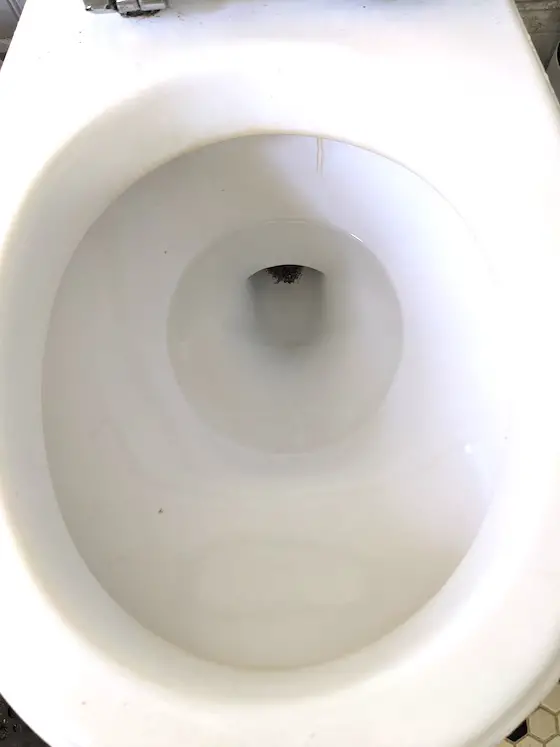
It took just 20 minutes of soaking and swishing with a toilet brush to get these results. There's just one tiny vertical stain I have to remove by soaking a small sliver of paper towel in some oxalic acid solution. I'll then press it on the stain and let it work for several hours.
After a few more minutes the bowl looked like new. The transformation was almost unbelievable. Since we have curious cats, I made sure I never left the toilet unattended during this process. If you have pets and need to let the oxalic acid sit for a longer time, be sure you put the toilet seat down and close the door to the bathroom. Put a warning sign on the closed lid warning other humans that an acid solution is in the bowl.
After this victory, I decided to go out to the garage to see if the oxalic acid would remove harsh rust stains left on the concrete floor from the bottom of my snowblower.
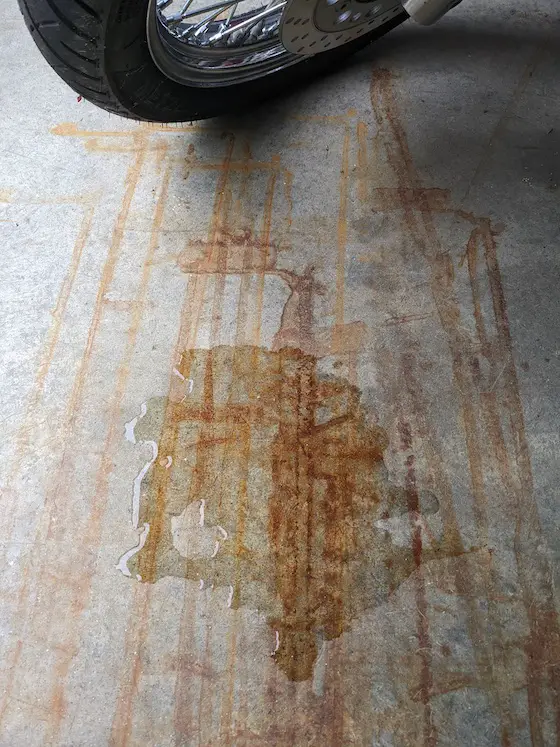
This is the oxalic acid solution just after I poured it onto the rust stains. I left it sit for a few hours.
I decided to boost the strength of the solution adding two tablespoons of the oxalic acid powder into six ounces of water. I put the plastic cup of water in the microwave to heat it up before adding the acid. I remembered from chemistry class that the heated water would allow the powder to dissolve faster. I wasn’t disappointed.
I took a before photo of the rust stains before I started. I then poured the acid solution onto the center of the worst area of rust to create a puddle. I wanted to be able to see the original rust stain on either side of the test area once this experiment was complete. Keep in mind I didn’t scrub or do anything but pour the solution onto the concrete.
I allowed the acid to work for hours and later when I went out to use the grill to cook, I rinsed off the acid solution that remained with clear water and squeegeed it off. The next day a large amount of the rust was gone and the concrete looked much brighter. I know I can remove all the rust with a little more effort and my concrete floor will look like new!
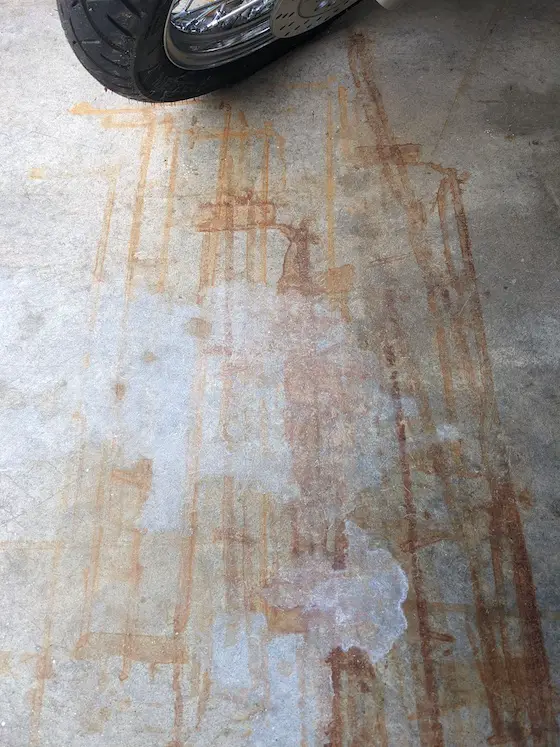
You can see how the rust stain is almost gone after one treatment. The rust soaks into the cement paste making it harder to remove than off the glass glaze of porcelain china. A few more treatments and the rust will be gone and the concrete will be lighter.
Column 1473
6 Responses to Rust Stains in Toilet